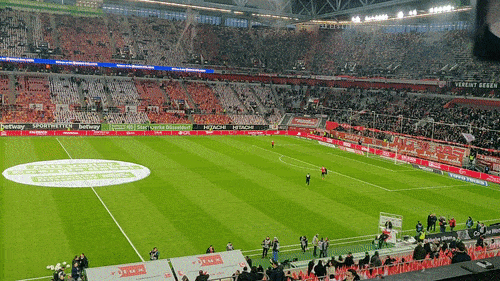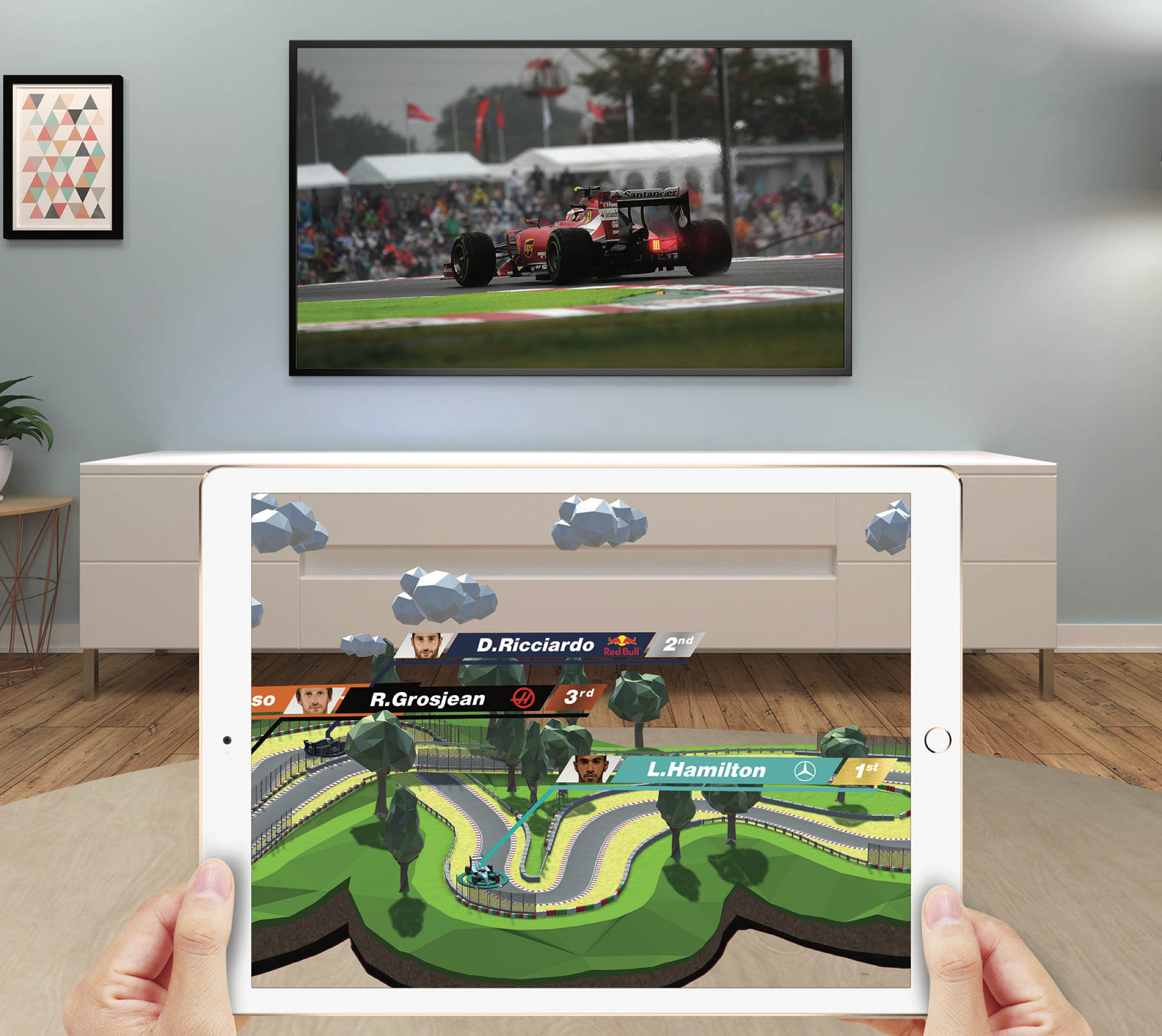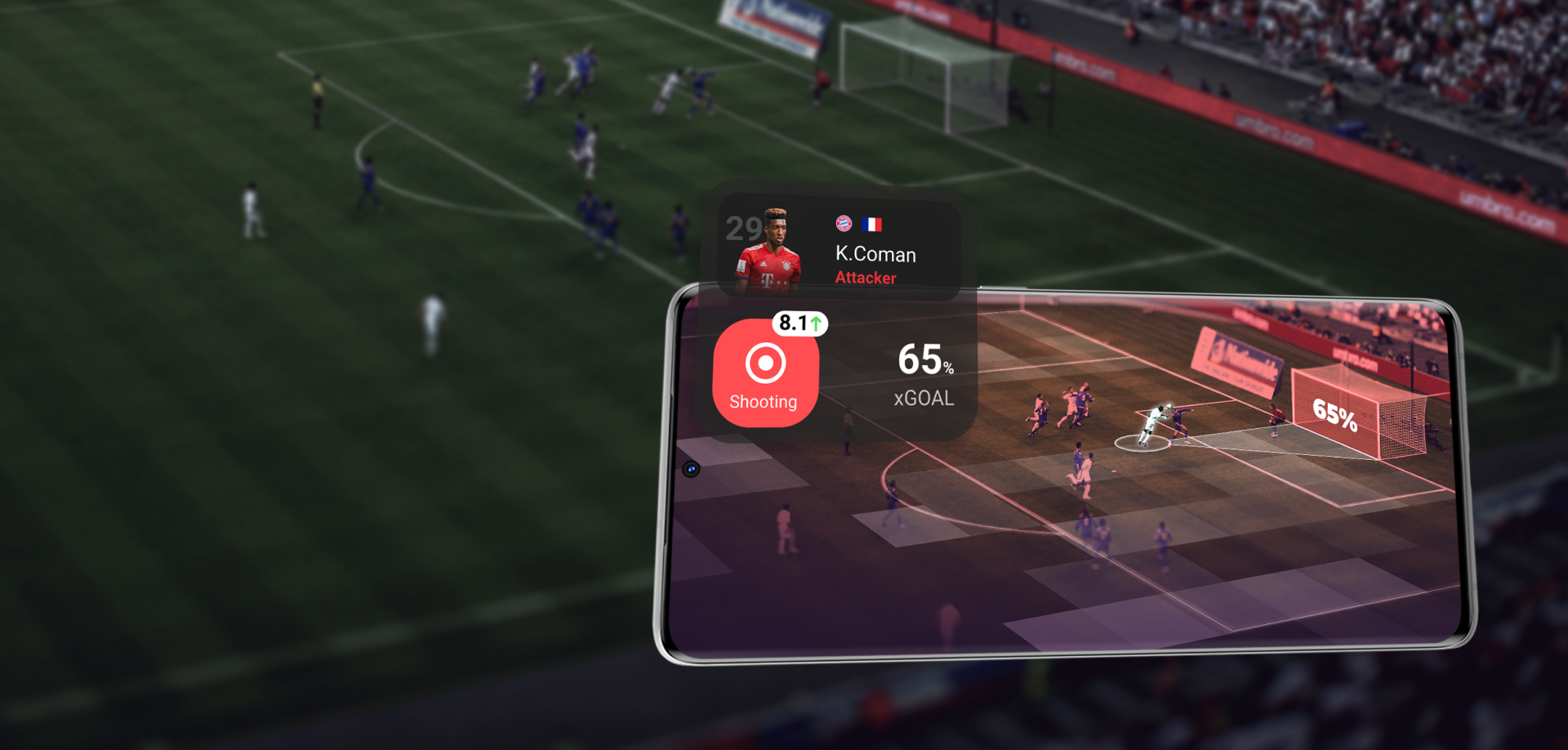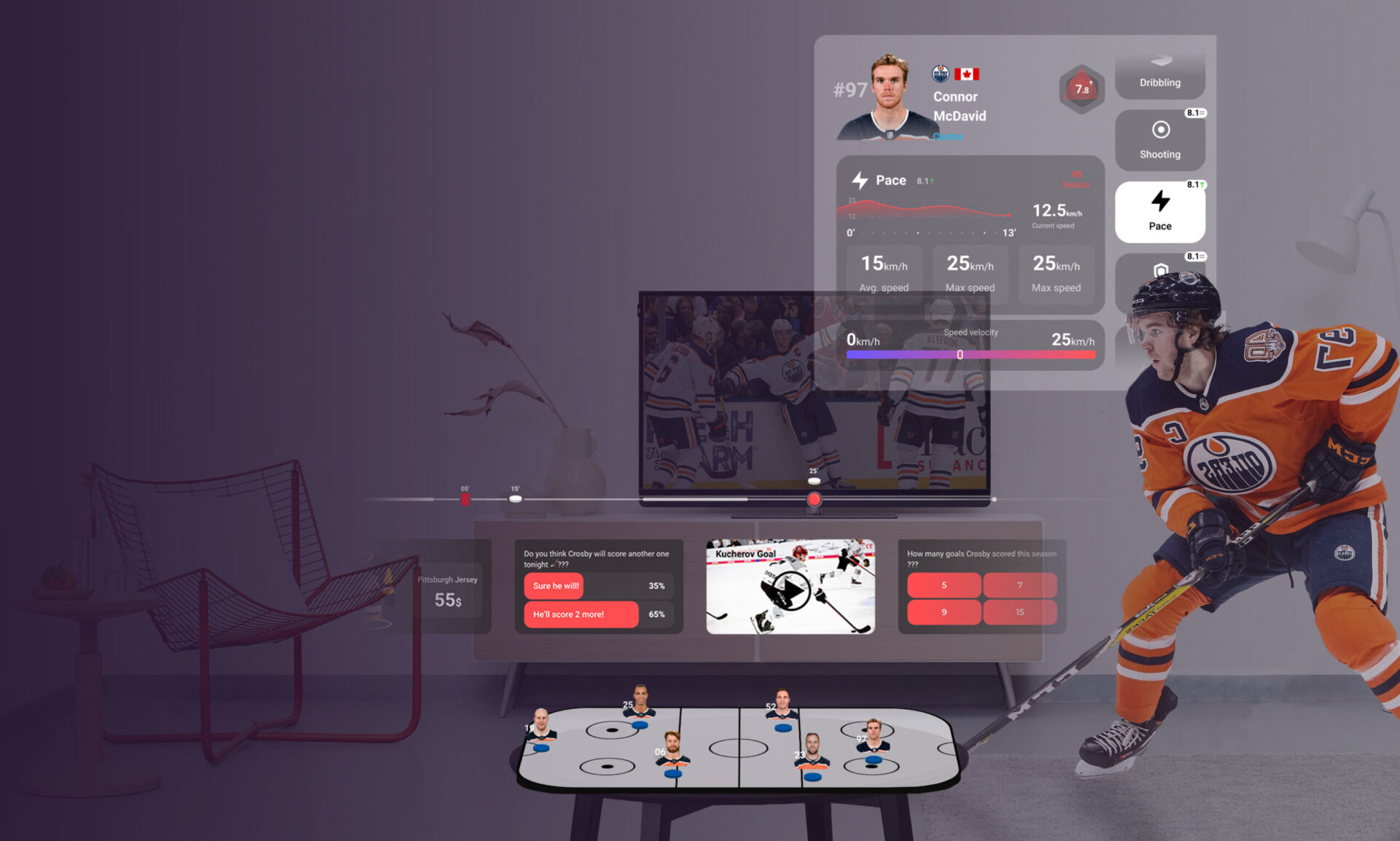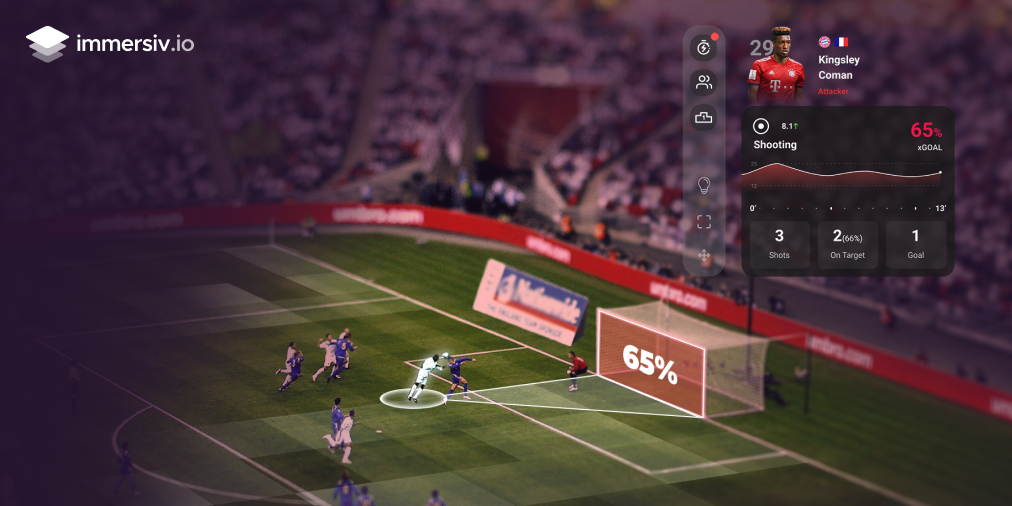
Augmented reality is not really new for the sports industry, we were used to AR content over videos with graphics enhancing the TV feed (with scores & lineups directly placed on top of the streaming). Still, one can consider it is not really AR in fact as it’s not interactive & relevant to every user’s view (you can also check our definition of augmented reality). AR technologies are evolving fast, and today, AR is more interactive & users are able to display content on their smartphone, or soon smartglasses, that instantly recognize the area they’re in and interact with the real world. Let’s see the most interesting usecases of AR in sports, now and soon.
AR to improve the customer journey in-stadium
It was one of the first known uses of augmented reality (with the Google glasses), through a GPS with a path traced in AR to guide people in the street. With AR in stadiums, it is possible to offer an interactive way for every visitor to navigate, by helping them find their seats, join their friends or discover the main spots within their location more easily. AR content will be used to entertain fans but also to improve the customer journey in sports arenas. In this area, 5G will probably help to drive innovations in stadiums & bring immersive experiences to physical places.
AR to entertain during the pre-game & breaks
Augmented reality is offering the possibility to display content on the field when there is no game. For example, before the game, the lineups of the 2 teams can be displayed through any mobile, allowing fans to understand & discuss the team’s composition.
Within the stadium, it is also possible to display the main match information, with the score, the different goals, or the competitive history of the 2 teams, exactly like when people are at home and the broadcasters display these elements over the video during breaks.
For some competitions, like golf, cycling, or car race, it is also possible to create an AR view of the different maps or tracks to let people discover the specificities of the path with curves, elevation, distances… Or to follow the athletes on the map throughout the event with live tracking.
AR to better analyze the game with data
One of the main recent innovations in sports is the use of trackers, computer vision, and AI to analyze players’ performances at every level. It completely changes the way athletes are training, the way coaches are scouting and taking decisions, but it will also change the way people watch sports.
With the possibility to display AR graphics on the field, fans will have everything in their hands to better understand how the players move on the court, their favorite shooting location, how the defensive lines are placed… AR on the field will be the greatest way to enhance the real game with high-end graphics. Like in a video game, fans will have the opportunity to interact with players and events on the court to display as much information as they want.
AR to create immersive mini games
AR also offers many possibilities to entertain fans before, during or after the game with mini-games, from an in-stadium giant paper chase to a scoring game directly on the field during the breaks.
With the latest technologies, such as Microsoft Azure’s Kinect, it is also possible to create interactive games on a video booth. For example, teams can offer fans the opportunity to become their favorite players in 3D and interact with the ball on the screen to score as many goals as possible (an experience that we’ve already created with Deutsche Telekom & the FC Bayern)
AR to engage fans with social media activations
Social media became really important in every team & league communication’s strategy, and not only during the game day. During the COVID-19 crisis and the global stoppage of competitions, social media platforms were the only way to interact with the fans by offering them content.
With augmented reality, the sports industry will also find brand-new ways to engage their fans, by creating personalized experiences for the fans. For example, with Instagram filters at the colors of their favorite teams or country during global competitions, or with Snapchat lenses allowing fans to take pictures with their favorite players in 3D just next to them.
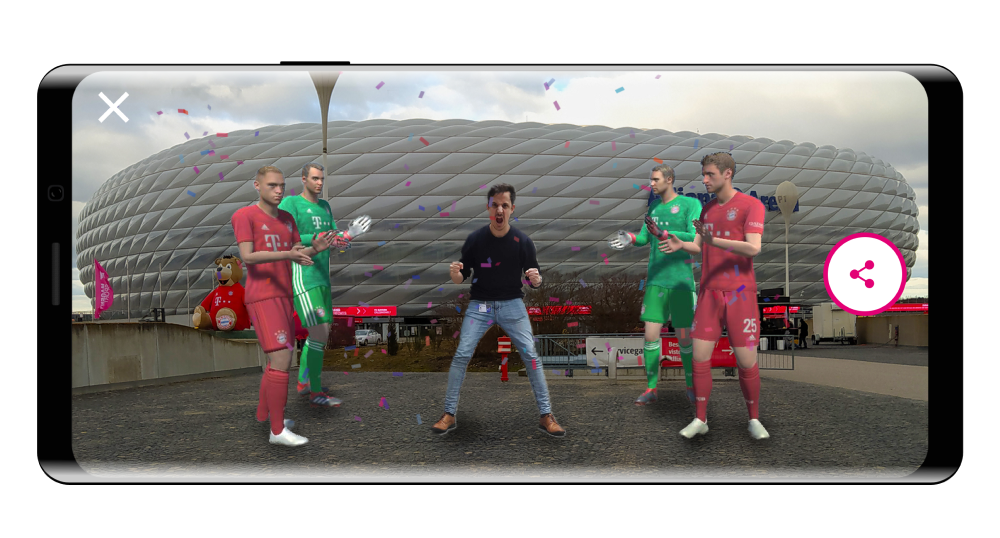
@Immersiv.io’ project with Deutsche Telekom & FC Bayern
AR around the broadcast to bring home the game atmosphere
Immersive experiences for fans who can’t come to the stadium is also a huge trend now. With AR, it is possible to bring home the game atmosphere, with volumetric videos of the athletes displayed directly in fans’ living room, AR portal to let them enter the stadium through 360 videos and the possibility to display the pitch or the scoreboard directly onto their tabletop (see more about the future of sports broadcasting with AR).
AR for merchandising & sponsorships
AR in retail is also a great opportunity for the sports industry. It is now possible to let fans display the jersey they want to buy in 3D in front of them, or to let them try their future sneakers in AR to help their decision.
It will also be possible for them to interact with the players to directly find the sneakers or clothes worn by them in one click and get access to the team’s shop easily.
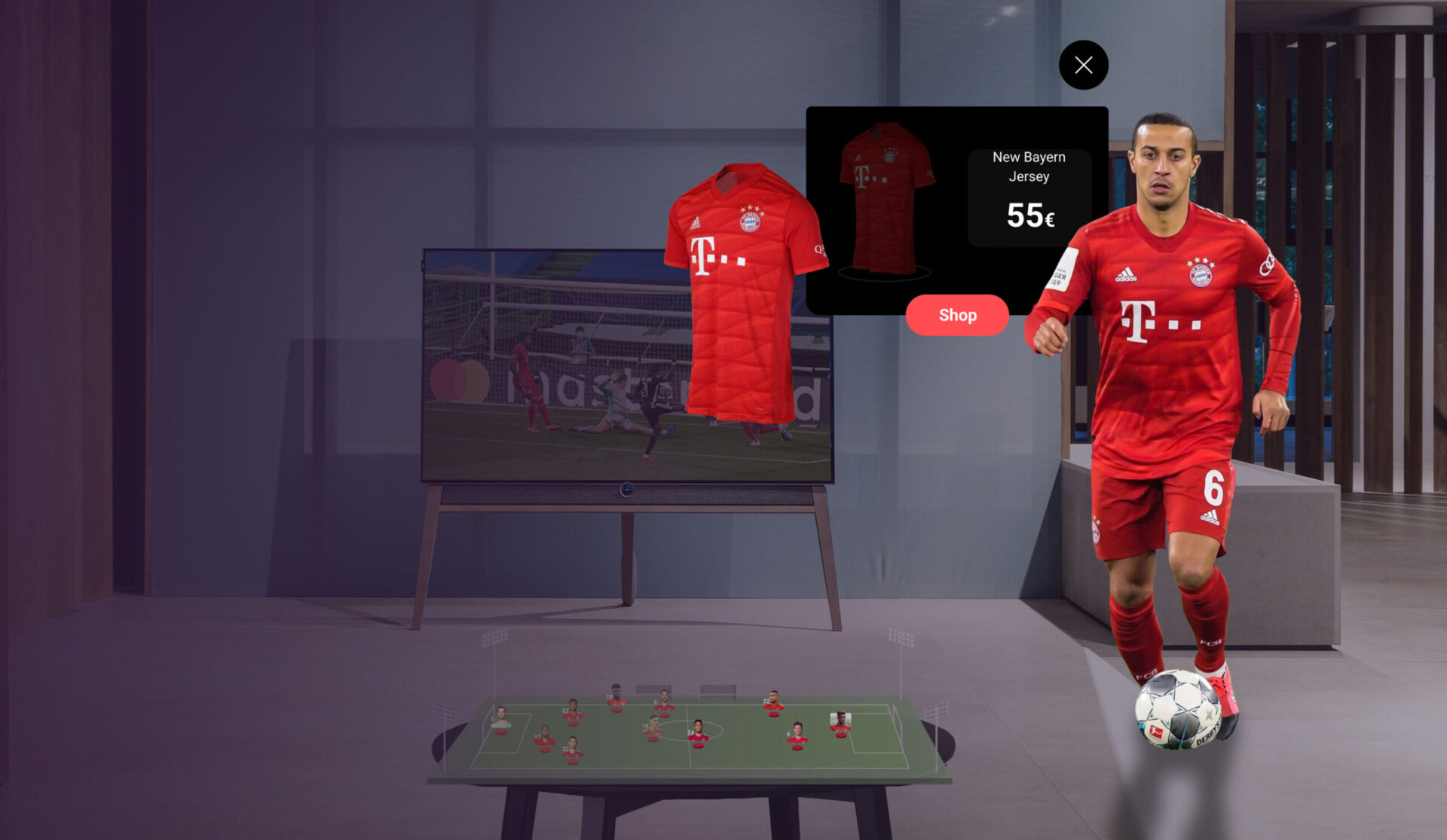
AR will also drive new possibilities for teams & leagues to monetize with advertisements in AR, whereas in-stadium or in the different content displayed in 3D. It will also be more engaging for fans to get personalized ads depending on their favorite teams & interests.
AR to augment athletes’ training sessions
As athletes constantly need to learn & improve their performance, AR could become a strong ally in the future, in different ways. AR works with computer vision and machine learning models that analyze what’s happening through the camera, so that it will be able to recognize body gestures and movements in real-time, allowing athletes to better measure their performance after a session. It will also enhance their training session with the possibility for example to display 3D content they have to touch or bypass, or to simulate actions on the field in AR (with for instance visualizations of the correct trajectory of the ball).
With the launch of smartglasses, it will also be a way for them to display a lot of information and statistics in front of their eyes, with no need for a smartphone, smartwatch or other screens near them. For example, we can imagine swimmers displaying their speed, position regarding the other competitors, heart rate and chrono directly with AR content on their glasses.
Sources:
Revolutionizing Sports With Augmented Reality – Forbes
AR in Sports: Augmented Reality Apps that Bring Fans into the Game – ARPost
6 Ways Augmented Reality Is Disrupting The Sports Industry – Augrealitypedia
Augmented Reality Has Its Limits, But Is Here To Stay In Sports – Front Office Sports


